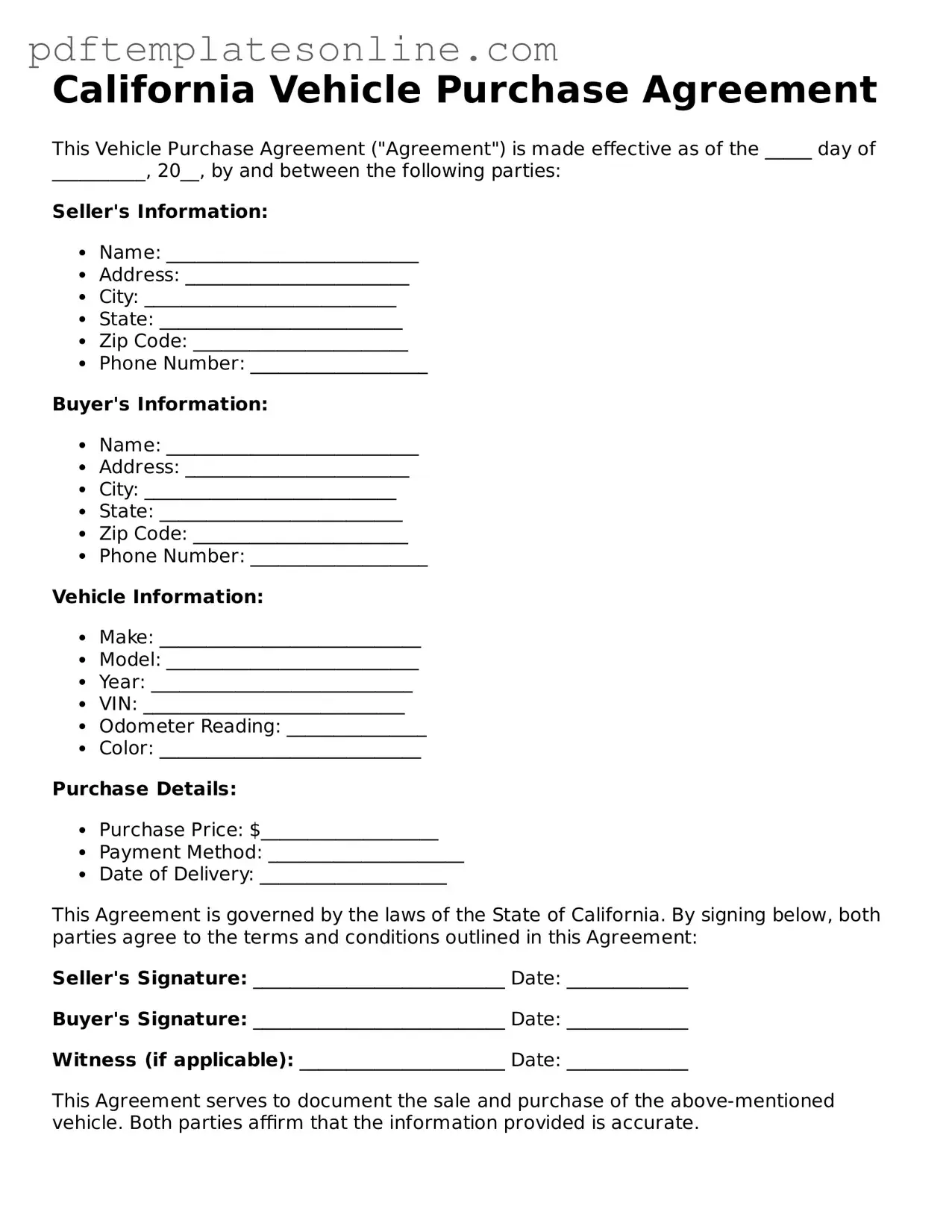Official California Vehicle Purchase Agreement Document
The California Vehicle Purchase Agreement form is a legal document that outlines the terms and conditions of a vehicle sale between a buyer and a seller. This agreement ensures that both parties understand their rights and responsibilities during the transaction. By clearly detailing the vehicle's specifications, price, and payment terms, the form helps to prevent misunderstandings and protects both the buyer and the seller.
Access Vehicle Purchase Agreement Editor Now
